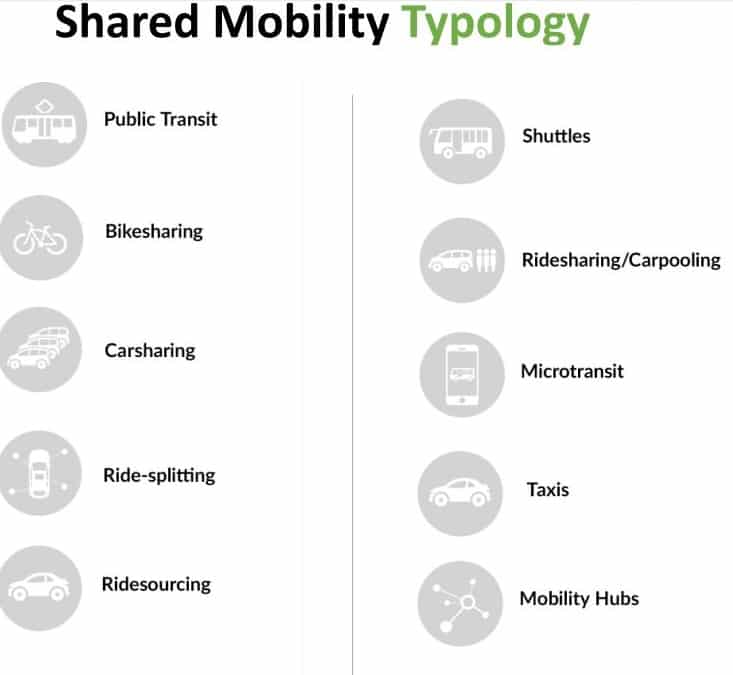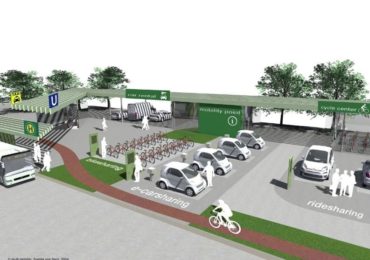Autonomous cars are vehicles that can sense its environment and operate without human input. There are five levels of autonomous technology which will upgrade as years pass by starting from level one which requires more driver assistance to level five in which the vehicle is responsible for all the actions with no human input whatsoever. By 2050 it is said that cities will witness the luxury of fully autonomous vehicles on road. There are many advantages associated to these communicative self-driving cars. This article will focus on one such advantage. It is said that driverless cars will facilitate car sharing, ride sharing programs in the city hence reducing the cost of personal mobility by 30 to 60 % relative to private auto ownership.
The Sharing Trends
Shared mobility has developed swiftly over the last couple of years. Ride-sharing platforms act as an advanced strategy, a smart and sustainable solution, that enables citizens to access various modes of transport such as cars, bikes etc. on need basis.

These solutions aim at decreasing personal car ownership and vehicle miles travelled, refining the urban land use and development, providing affordable access to vehicles for all citizens as well as encouraging use of non-motorized modes of transport.
The implementation of these mobility strategies play an important role in enhancing the efficiency of the existing multimodal systems in the city. Shared mobility strategies offer the following benefits:
- Reduced congestion. (Shaheen et al, 2009) have stated that car-sharing removes an approximate of 4 and 20 cars per vehicle-shared from the road.
- Road space freed up due to reduced need for on street parking. Provides potential for street widening, streetscaping etc.
- Reduced financial burdens due to car ownership. According to the research, by (Shaheen et al, 2009), roughly 25%-71% of citizens using car sharing programs have stated that shared mobility options have allowed them to avoid the purchase of a personal vehicle
- Efficient mobility and better accessibility for the citizens.
Integration of Autonomous Technology with the emerging sharing trends
In order to integrate Autonomous Vehicles to these platforms the following steps could be taken:
- Co-operation of public transport authorities and the autonomous car companies in terms of creating integrated mobility hubs
- Establishing improved multi-modal transportation solutions along with technological innovations to provide strong and accessible mobility systems
- Regulations on Road User and Parking Charges
- Incentives and initiatives to encourage sharing economy
- Strong mobility business models
- Encouraging public awareness and acceptance
- Policies and regulations to promote new forms of public- private collaboration to provide benefits for all

Today, stakeholders in the automotive industry have started to participate in the sharing game by providing different types of sharing platforms. One such platform is that of peer-to-peer sharing systems for current car owners who are actively renting out and sharing their personal vehicles hence contributing to the sharing economy of the city.
Assuming that the sharing trends in the city are hyped up and citizens acceptance of the technology is positive in the next couple of years, a future could be imagined where the mobility systems of the city will completely rely on the shared mobility platforms in the city.
The autonomous vehicles used in the ride sharing and car sharing services will provide the convenience of point-to-point transportation saving precious time from the traffic and search for parking spaces.

Autonomous shared systems will be beneficial for non-drivers such as senior citizens, lower-income group citizens and citizens without licenses. With incentives and awareness from local government, increased use of sharing services will bring down the cost per distance travelled. This will prove to be an economical, convenient, and sustainable solution for the citizens.
In this era of developing technology, high-speed and accessible internet has opened new possibilities to create successful car sharing platforms. This combination of autonomous mobility with ride sharing strategies will demonstrate a perfect recipe for cost-effective and efficient mobility in the future.
Author Bio: Bhavana Vaddadi is a fresh masters graduate from Delft university of technology, The Netherlands.She did her undergraduate studies in Faculty of Planning from Center for Environmental Planning and Technology, Ahmedabad. Her major interest lies in the field of Urban Mobility and the arrival of Intelligent transportation systems in the future.